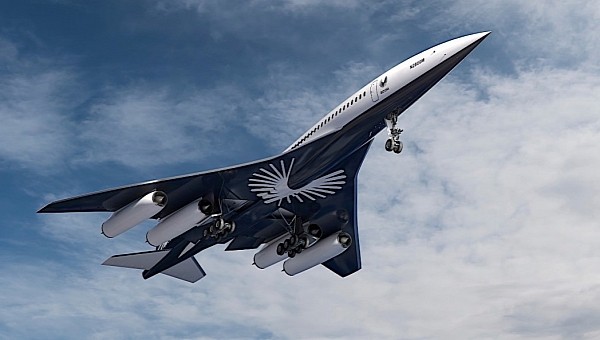I don’t know about you, but I personally can’t wait for the age of supersonic passenger transport to make a glorious comeback. There are several companies working on this issue at the moment, and one of them, Boom Supersonic, made another step in the right direction this week.
Boom’s proposed contraption is called Overture. Described as the “world’s fastest airliner,” it should be capable of going at speeds of about Mach 1.7 (1,100 mph/1,800 kph) and for distances of over 4,800 miles (7,800 km).
The plane, which seems not to have an easy path coming into this world, was first shown a few years back, but underwent a redesign which was presented in 2022. A prototype is not scheduled to be shown until 2025, and a production version will probably not take to the sky before 2029.
At the core of the plane will be of course its engines. Four of them will be attached to each flying machine, generating power from 100% sustainable aviation fuel (SAF) and powerful enough to lift the aircraft and up to 80 passengers.
The engine family now in the works over at Boom is called Symphony, and tasked with its design will be as of this week Florida Turbine Technologies (FTT), a subsidiary of Kratos Defense & Security Solutions. These guys are somewhat experienced in this field, being involved to some degree with the design of the engines powering the F-22 and F-35 fighter jets.
The Symphony engine is a twin-spool, medium-bypass turbofan unit rocking no afterburner. Still, it can develop 35,000 lbs of thrust at takeoff and it will be built for quiet operation, with a single-stage fan and passively cooled high-pressure turbine.
FTT will have a tough time ahead, as it’ll have to design the engine to be able to deliver an increase of 25 percent in time on wing, but also a ten percent reduction in operating costs for airlines when compared to existing engines.
The plane, which seems not to have an easy path coming into this world, was first shown a few years back, but underwent a redesign which was presented in 2022. A prototype is not scheduled to be shown until 2025, and a production version will probably not take to the sky before 2029.
At the core of the plane will be of course its engines. Four of them will be attached to each flying machine, generating power from 100% sustainable aviation fuel (SAF) and powerful enough to lift the aircraft and up to 80 passengers.
The engine family now in the works over at Boom is called Symphony, and tasked with its design will be as of this week Florida Turbine Technologies (FTT), a subsidiary of Kratos Defense & Security Solutions. These guys are somewhat experienced in this field, being involved to some degree with the design of the engines powering the F-22 and F-35 fighter jets.
The Symphony engine is a twin-spool, medium-bypass turbofan unit rocking no afterburner. Still, it can develop 35,000 lbs of thrust at takeoff and it will be built for quiet operation, with a single-stage fan and passively cooled high-pressure turbine.
FTT will have a tough time ahead, as it’ll have to design the engine to be able to deliver an increase of 25 percent in time on wing, but also a ten percent reduction in operating costs for airlines when compared to existing engines.










